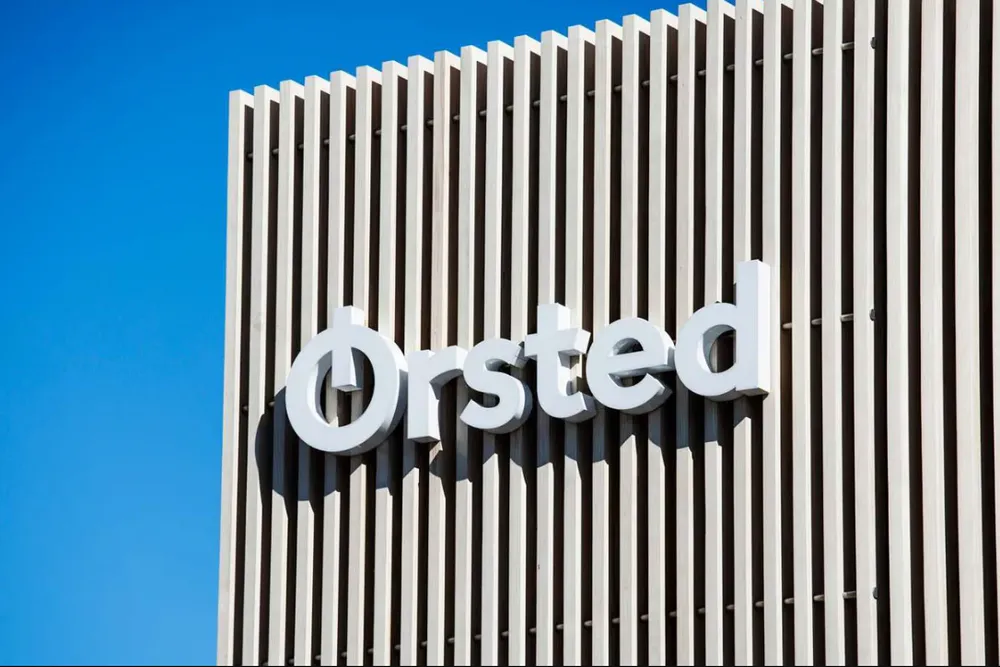Orsted and Equinor warn wind wakes from Total project 'threaten viability of assets'
Financial impact assessments submitted by Orsted and Equinor provide clearest picture yet of impact wind wakes could have on offshore wind developers and projects

Orsted and Equinor estimate that wake losses from a planned TotalEnergies offshore wind farm could cumulatively cost their nearby assets up to $480m, threatening the economic viability of sites including the Danish developer’s huge Hornsea arrays.
Denmark’s Orsted and Norwegian oil giant Equinor each submitted estimates of the financial losses their assets could suffer last week in the UK planning proceeding for the Outer Dowsing wind farm.
Orsted estimated that wake losses from Outer Dowsing could together cost three of its nearby wind farms between £55m and £199m over their lifetimes. Equinor put the impact on four of its existing and planned assets at £42m to £164m. Cumulatively, that puts the top end of the financial fallout at £363m ($481m).
The 1.5GW Outer Dowsing project is being developed in the UK North Sea by a consortium of France’s TotalEnergies, Australian-owned Corio Generation and Thailand’s Gulf Energy Development.
Orsted has previously raised concerns over wake losses Outer Dowsing could inflict on its four Hornsea projects totalling around 8GW, which range between around 20-40km away from the proposed newcomer.
What are wind wakes?
When wind turbines extract energy from the wind to produce power, they leave trails of lower intensity and more turbulent wind stretching behind them. These trails, known as wind wakes, can stretch vast distances – even 100km. If one wind farm is caught in the ‘shadow’ of another’s wake, the lower wind speed will mean it generates less power, reducing revenues. One wind farm 'waking' another is sometimes known as ‘wind theft’.
Equinor meanwhile has highlighted the impact Outer Dowsing could have on its 317MW Sheringham Shoal and 402MW Dudgeon assets. The oil giant won approval last year for two extension projects that would double the capacity of each asset, bringing the total capacity of the four assets to over 1.4GW.
Outer Dowsing submitted an independent assessment in the planning proceeding produced by consultancy Wood Thilsted, estimating the wake losses it could inflict on its North Sea neighbours.
Wood Thilsted estimated that on average Outer Dowsing would result in a 0.58% drop in annual energy production (AEP) at nearby wind farms. This dropped to 0.51%, however, when the impacts of the other planned wind farms not yet built were taken into account.
Orsted and Equinor used that assessment as the basis for conducting their own estimates of how much wake losses from Outer Dowsing could affect the finances of their nearby projects.
Both said that while they could not reveal their “internal view” on the financial impacts given commercial sensitivities, the estimates they provided based on a mix of publicly available data and information submitted in the planning proceeding were “indicative” of the scale of financial losses wind wakes could cause.
Orsted’s assessment focused on the impacts Outer Dowsing would have on its Race Bank (573MW), Hornsea 1 (1.2GW) and Hornsea 2 (1.3GW) wind farms – although it does own other assets that stand to be affected, including its 270MW Lincs and 210MW Westermost Rough sites.
Orsted said the maximum financial impact Outer Dowsing could have on Race Bank and its two Hornsea projects, £199m, assumed they would all get decade-long lifetime extensions.
The developer said the wake losses will “significantly challenge the economic viability” of those wind farms.
This will be particularly true when market support for these wind farms “falls away and the assets’ revenue streams become fully merchant," in other words, when the "financial case for these assets becomes significantly more constrained.”
The impacts will “influence lifetime extension decisions,” said Orsted, and are likely to result in the “earlier decommissioning of one or more of these assets than would otherwise have been the case.”
Equinor: ‘Wake losses could see projects miss out on CfDs’
Equinor estimated that the financial impact of the wake losses introduced by Outer Dowsing is “significant and considered material in all scenarios,” ranging from £42m to £164m, again assuming a ten-year lifetime extension of the assets.
“Any wake losses from [Outer Dowsing] will represent an increased risk to the commercial viability” of its Sheringham Shoal and Dudgeon assets, it said.
For the existing sites, the wake loss from Outer Dowsing “reduces the potential of life extension, which is likely to result in earlier decommissioning.”
For the two extension projects, which are eligible to bid into this year’s national Contracts for Difference auction, it will “reduce the competitiveness” of the projects, said Equinor. “Given the tight competition in such auctions, this could mean the difference between being successful in the auction or not.”
Both Equinor and Orsted are calling for mitigation or compensation of wake losses from Outer Dowsing.
Orsted chief: wind wakes require more planning, less bickering
In a recent white paper released by Orsted on how to revive the offshore wind industry, it called for governments to employ “strategic planning to share offshore wind resources across jurisdictions and reduce wake effects.”
It warned that certain planned offshore wind farms in the German North Sea are expected to reduce the energy output of nearby sites by an eye-watering 5-15%.
“That's what we're talking about with this seabed design,” he said, encouraging the industry to take a holistic view rather than getting involved in “bickering” over particular projects.
(Copyright)